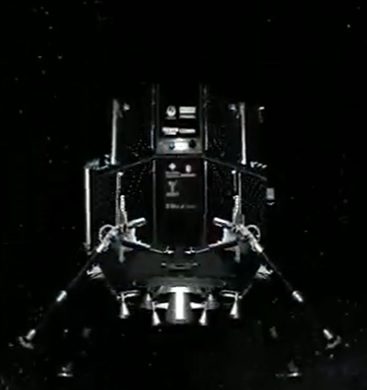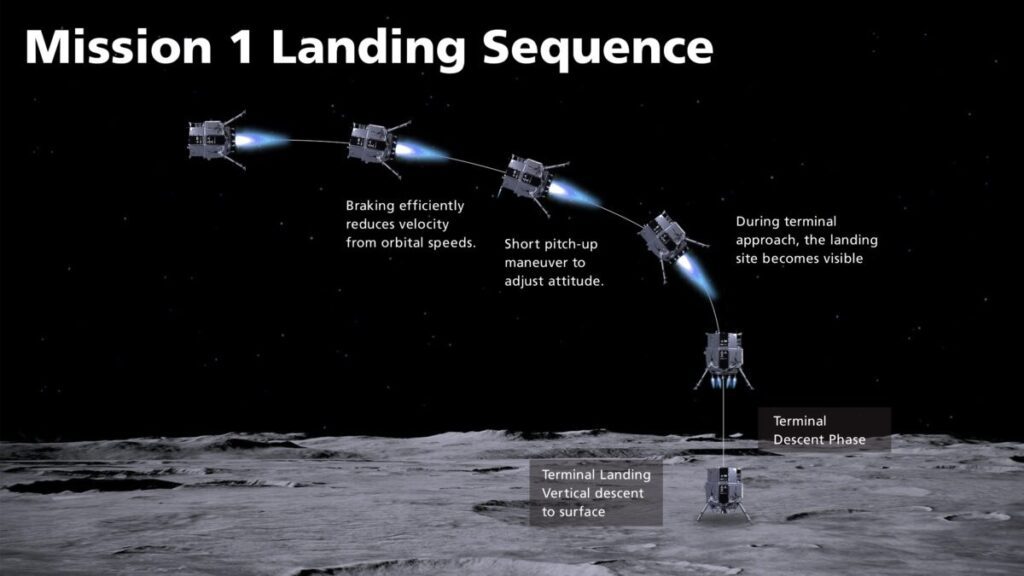Lunar lander Hakuto-R is feared to have crashed on the surface of its destination after communication with the Japanese spacecraft was lost just moments before its planned touchdown, at around 1640 GMT on 25 April. The lander had been in communication with the Mission Control Center in Nihonbashi, Tokyo, as it descended to the lunar surface, but controllers did not receive data to indicate a controlled touchdown.

Image taken from animation of live landing sequence animation of Hakuto-R. Hakuto-R was relatively small compared to other lunar spacecraft, at just over 2m tall and weighing 340 kg. Courtesy: iSpace via Twitter
An initial study of the telemetry appeared to show that propellant reached the “lower threshold” during the final descent after which the lander accelerated towards the surface, implying that the engines had stopped through propellant starvation. As a result, iSpace said there was “a high probability that the lander eventually made a hard landing on the Moon’s surface”. A full investigation into the root causes of the failed landing will be undertaken by iSpace. It is thought that the spacecraft crashed onto the lunar surface after an unpowered fall from at least 80 m.
Takeshi Hakamada, iSpace founder and CEO, said: “At this moment, we have not been able to confirm a successful landing on the lunar surface,” but that controllers had been in touch with the lander until the “very end” of the landing process.
Tokyo based iSpace, a Japanese newspace company focused on the development of space robotics, successfully launched the Hakuto-R M1 lunar lander on a Falcon 9 from Cape Canaveral in the US, at 0738 GMT on 11 December 2022. On board Hakuto-R, and now also presumed lost, was a small lunar rover, Rashid, developed by the Mohammed bin Rashid Space Centre in the United Arab Emirates, and a lunar robot from Japan’s space agency JAXA.
JAXA president Hiroshi Yamakawa reflected on the mission’s conclusion: “Today, iSpace’s Hakuto-R Mission 1 became the first private company to attempt to land on the Moon, but unfortunately, the landing could not be realized”. Indeed, had it gone to plan, Japan would have joined the US, Russia, and China in being able to boast successfully landing a spacecraft on the Moon. The company has not given up on its hopes though, and is already developing a second lander, M2, scheduled to launch in late 2024.

A live animation showed the lander prepare to touch down on the Moon after coming as close as 89 m from the surface. Courtesy: iSpace via Twitter






